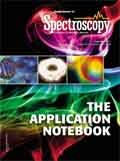Disinfection of Tetraselmis sp. with UV LED Application
Application Notebook
Analyzing the effect of UV LED modules on disinfecting ballast water using UV–vis spectroscopy.
Analyzing the effect of UV LED modules on disinfecting ballast water using UV–vis spectroscopy.
Ballast water is seawater that fills a ship to maintain its balance. Annually, about 10 billion tons of ballast water with organisms such as planktons, germs, and bacteria is being transported around the world, and they cause diseases and contamination of marine ecology. UV treatment has the advantage of having no remaining toxic and disinfection by products (DBPs). Selective monochromatic wavelengths can be applied in the UV. Besides this UV LED modules have a low power consumption rate and only a 10~100 (mA) applied current.
Therefore, UV LED modules were designed and fabricated to analyze the disinfection characteristics of UV LED with wavelengths of 255, 265, and 280 nm on phytoplankton such as Tetraselmis sp.
Experiments
Spectrum Analysis
To analyze the optical spectrum characteristics of the fabricated UV LED modules, a spectrometer (Avaspec-3648, Avantes) was used.

Figure 1: Avantes spectrum of the UV LED modules.
The UV LED modules that were used in the experiment showed peak wavelengths at 255, 265, and 280 nm and approximately 10 nm full widths at half maximum (FWHM). Because the UV LED had the characteristics of a monochromatic wavelength that does not show its spectrum in ranges except for those mentioned above, selective UV irradiation was possible (1).
The disinfection rates of the Tetraselmis sp. showed to be in accordance with the energy that was irradiated onto each UV LED module. The results show that the more the energy that was irradiated, the higher the disinfection rate was.
As a result, in the case of the Tetraselmis sp., the valid disinfection area was formed within the wavelength of the UV-C, and especially the highest disinfection rate occurred between 260 nm and 270 nm.

Figure 2: Shape of the Tetraselmis sp. before and after the UV treatment. While the Tetraselmis sp. clearly showed a round cell membrane before the UV treatment, the shape of the cell membrane was transformed after the UV treatment (2).
Experimental Results
Figure 2 shows the shape of the Tetraselmis sp. before and after the UV treatment. While the Tetraselmis sp. clearly showed a round cell membrane before the UV treatment, the shape of the cell membrane was transformed after the UV treatment (2).
References
(1) Li Xiaojuan and Chen Cunshe, WSEAS Transactions on computers 8(2), 237–247 (2009).
(2) Xiaoli Zhou, Muqing Liu, Yong Qian, Hui Wang, and Shaolong Zhu, WSEAS Transactions on electronics 5(12), 457–467 (2008).
Avantes
9769 W. 119th Dr., Suite 4, Broomfield, CO 80021
tel. (303) 410-8668 or (866) 678-4248, fax (303) 410-8669
Website: www.avantes.com

Single Cell and Microplastic Analysis by ICP-MS with Automated Micro-Flow Sample Introduction
April 25th 2024Single cell ICP-MS (scICP-MS) is increasingly seen as a powerful and fast tool for the measurement of elements in individual cells, mainly due to the high sensitivity and selectivity of ICP-MS. Analysis is performed in the same way as single nanoparticle (spICP-MS) analysis, which has become a well-established technique for the analysis of nanoparticles and particles.
Hot News on Agilent LDIR, New Developments, and Future Perspective
April 25th 2024Watch this video featuring Darren Robey and Dr. Wesam Alwan from Agilent Technologies to gain insights into the future trends shaping microplastics research and the challenges of their characterization. Discover the essential components necessary for accurate microplastics analysis and learn how the Agilent 8700 LDIR system addresses these challenges. Offering rapid and precise analysis capabilities, along with easy sample preparation methods that minimize contamination, the Agilent 8700 LDIR system is at the forefront of advancing microplastics research.
The World of Microplastics Up to Date – an Overview
April 23rd 2024Watch this 20-minute educational video by Andreas Kerstan, Agilent Product Specialist in molecular spectroscopy, to gain a comprehensive update on the microplastics landscape and the environmental concerns related to them. Discover the current challenges in microplastics characterization and how Agilent innovative solutions and techniques, including FTIR, LDIR, GC/MS, and ICP-MS, are addressing these issues head-on.